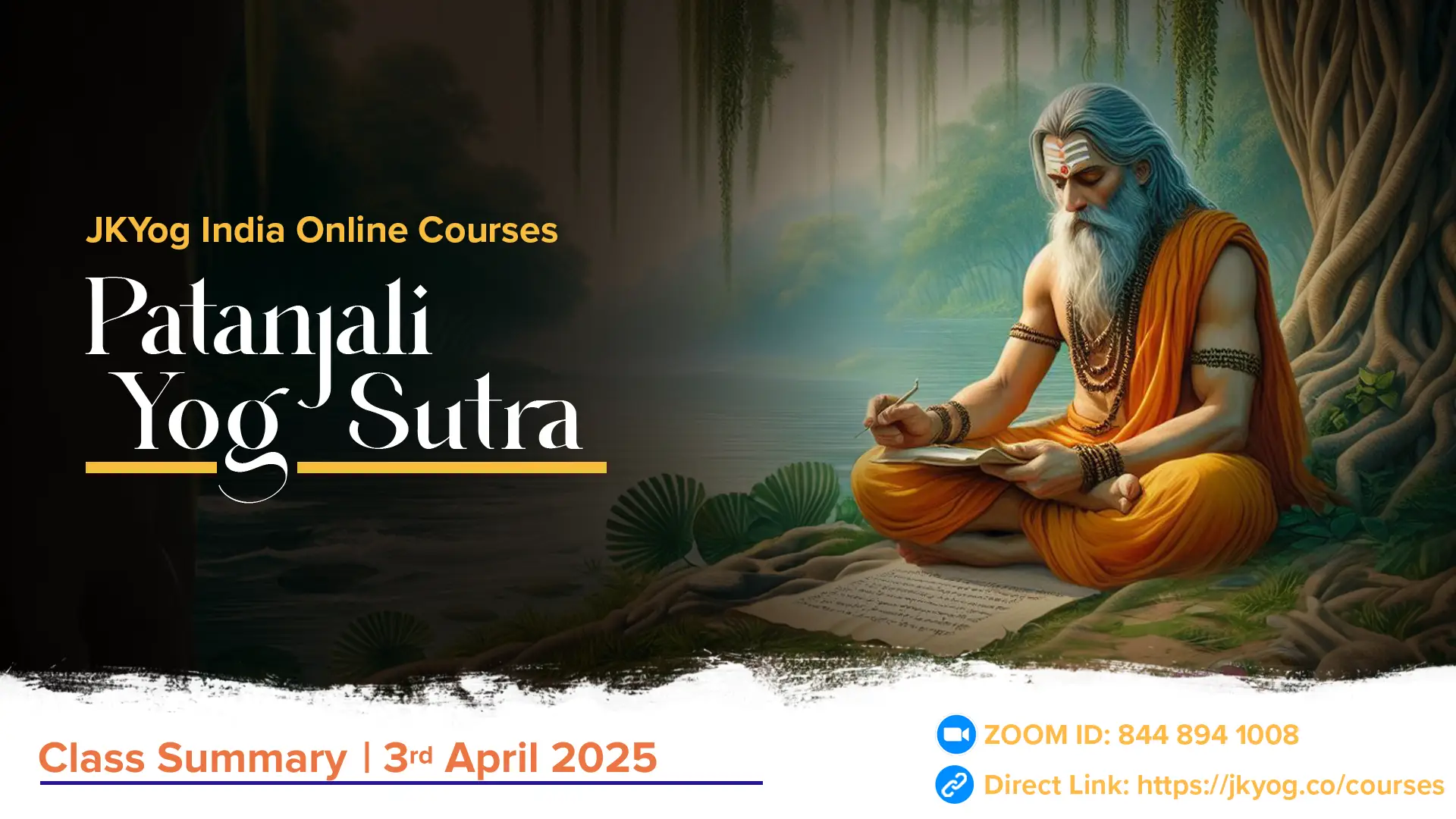Sutra 3.17
The Benefits of Saṁyama
शब्दार्थप्रत्ययानामितरेतराध्यासात् संकरस्तत्प्रविभागसंयमात् सर्वभूतरुतज्ञानम् || 3.17 ||
śabdārtha-pratyayānāmitaretarādhyāsāt saṁkaras-tat-pravibhāga-saṁyamāt sarvabhūta-ruta-jñānam || 3.17 ||
Translation:
The word, the sense, and the idea behind it are in a confused state on account of the superimposition of one over the other. By performing saṁyama, it is sorted out, and there arises knowledge of the speech of all beings.
Samyama helps to overcome confusion
Normally, word and sense go together. But words do not have a fixed sense. The same word can be interpreted in different ways since each individual may superimpose his/her own sense on the word. This point has been explained in 1.1
If there is a pun on the word, then the situation becomes still worse. Similarly, the idea behind a sense may also vary. For example, the word cow and its meaning carry a sense of worship for Hindus. For a person belonging to another religion, it may carry a sense of food. According to Sage Patañjali, all these confusions can be overcome by the performance of saṁyama.
Samyama helped Valmiki and Vyasa
The combination of concentration, contemplation, and meditation can help a person understand words, their meaning, and the idea behind them without confusion. That is why Sage Vālmīki and Sage Vyāsa could compose the great epics. In Indian tradition, the Vedas are considered to be eternal. The sages simply revealed them. How was it possible for them to render the Vedas in the same way as they were revealed to them? It was because of their saṁyama that they could achieve the feat.
Samyama helps in overcoming the limitations of the human mind
The commentator Vyāsa has discussed this sūtra quite elaborately, explaining the relationship between the word and its sense. Vācaspati Miśra goes one step further in reading the Bhāṭṭa Mīmāṁsaka theory of how we come to understand the meaning of sentences. What we hear from the speaker is only a series of sounds and phonemes. But the human mind brings about a syntactic and semantic relationship by analysing the meaning. Yet there arises confusion on account of the limitations of the human mind. This limitation can be overcome by the saṁyama process.
Experiment with parrots
“There have been documented cases of parrots having the ability to not just mindlessly repeat sounds they hear, but actually learn words and hold conversations. An African grey parrot named Alex became famous for his ability to identify colours and articulate abstract concepts such as size and difference. He could even joke with his trainer, snapping, “Don’t you tell me to calm down.”
Man-animal interaction
Man-animal interactions and communications become a part of a number of fairy tales and fables, just as the Panchatantra stories and Aesop’s fables. Mongoose story from the Mahabharata.
Jungle Book
The Jungle Book (1894) of Rudyard Kipling seems to follow a similar model. The hero is a young boy, Mowgli, who is left in the forest as a young child and is brought up by the animals. In it, we have characters like Bagheera the panther, Baloo the bear, Louie, the king of monkeys and Sher Khan, the Lion.
Summary: JKYog India Online Class- Patanjali Yog Sutra [English]- 3.4.2025








